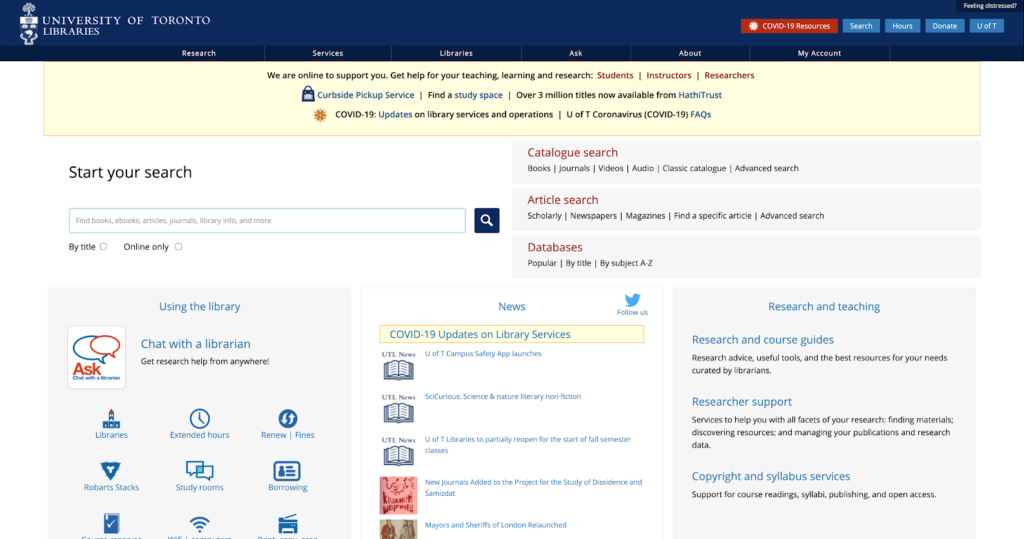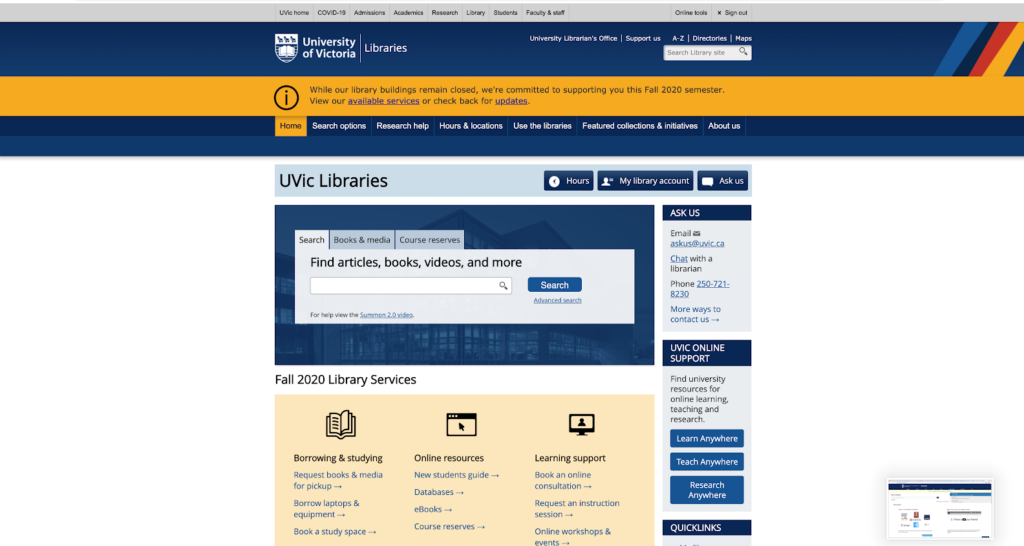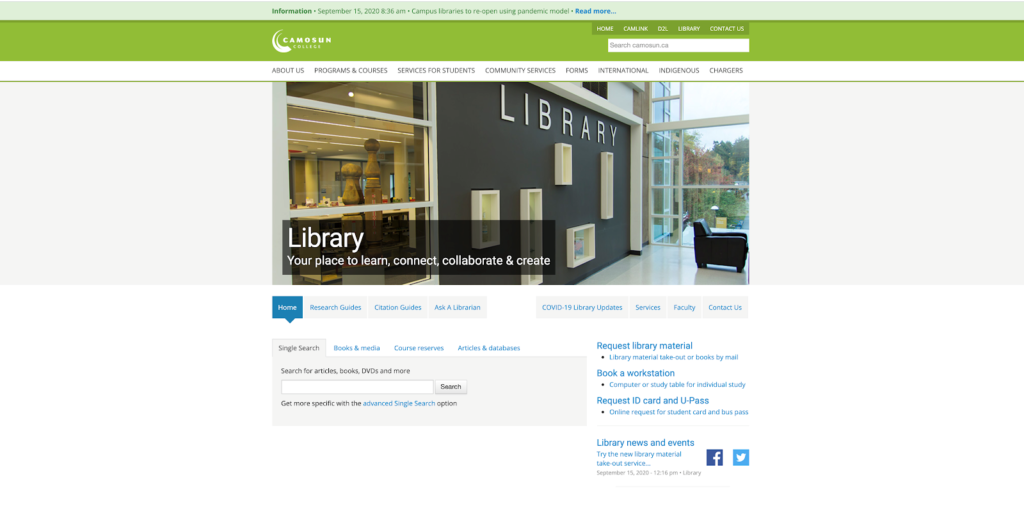4.4 Your Research Journey
Jemma Llewellyn; Erin Kelly; Sara Humphreys; Tina Bebbington; Nancy Ami; and Natalie Boldt
Imagine you have your task in hand for a particular course. Perhaps you need to find articles for an annotated bibliography. Maybe you need to find resources for a paper of some kind. You may want to research a topic for an upcoming presentation. Whatever you need to do, the library website is the place to start.
Familiarize yourself with your library’s website. Every university and college library has a website where you will find a rich array of resources. However, we know that when you first enter that website, it can be intimidating. Where should you start? First, we want to assure you that the resources you need will become much more familiar the more you use your library’s site, particularly if you ask for help. You will find that most university and college library sites are quite similar. First, let’s take a look at the University of Toronto’s Library home page.
On the University of Toronto main library page (Fig. 4.3), you can see a search engine that is titled “Start your search”; you can chat with a librarian (see “chat with a librarian” in the lower left-hand corner); there are research and teaching supports listed.

Next, let’s check out the main library page for the University of Victoria LIbraries (UVic Libraries). In Fig. 4.4 you can see a search engine that is titled “Find articles, books, videos, and more”; you can chat with a librarian (see “chat with a librarian” in the upper right-hand corner); there are also research and teaching supports listed.

The main library page for Simon Fraser University LIbrary offers the same tools in a different order. In Fig. 4.5 you can see a search engine that is titled “Library search”; you can chat with a librarian (see “Ask a librarian” in the “Top Links” menu); there are research and teaching supports listed.

Finally, college libraries also offer similar research tools, such as the main library page for Camosun College. On the college’s main library page (Fig. 4.6), you can see a search engine that is titled “Search for articles, books, DVDs, and more”; you can chat with a librarian (see “Ask A Librarian” on the main menu bar); and there are research and teaching supports listed.

You get the point: Library sites tend to be laid out in a similar fashion with the library’s search engine prominently displayed, access to librarians clearly placed, and links to resources you may need listed. Now that you can see just how easy it is to navigate your library from the home page, let’s go through the initial steps for researching for a project. (Spoiler: research is rarely a solo enterprise.)
Check who your subject librarian is at your institution. Another feature you’ll find at most university and college libraries is a librarian who specializes in certain fields. There is a librarian specialist for engineering, one for fine arts, one for history, one for English, one for math and computer science, and so on. You can ask any librarian about research, but you will be given specific help on your projects by one of these highly trained specialists. How much easier will your life be if you can contact a specialist about your project?
Look at the subject guides. Subject guides (usually found on your library’s home page) help you find tools, resources, and methods for your research. Often the subject librarian will have compiled resources for your specific discipline, which means you don’t have to go hunting around.
Contact the library and ask for assistance. The rule we generally follow for researching is this: if we spend more than five minutes looking for anything and we can’t find it, we contact a librarian (and you can see how easy that really is based on the above images!). Please remember that no scholar works alone. You might recall that in chapter one we referenced how important it is to get feedback on your writing? Similarly, we suggest chatting with your peers about your research work, taking advantage of your instructor’s office hours, or meeting with a librarian or writing centre staff. There are friendly experts ready to help you at any stage of a research project, whether you’re feeling stuck or excited or somewhere in-between.
The scholarly conversation is always happening, knows no boundaries, and is constantly evolving as new research, information, and conclusions develop. Each scholar builds on the work of those who came before, and that interaction occurs through citations and references. (More on this in section 4.5.) Just remember that every time you read and write in a scholarly context, you are part of, and adding to, that conversation!

